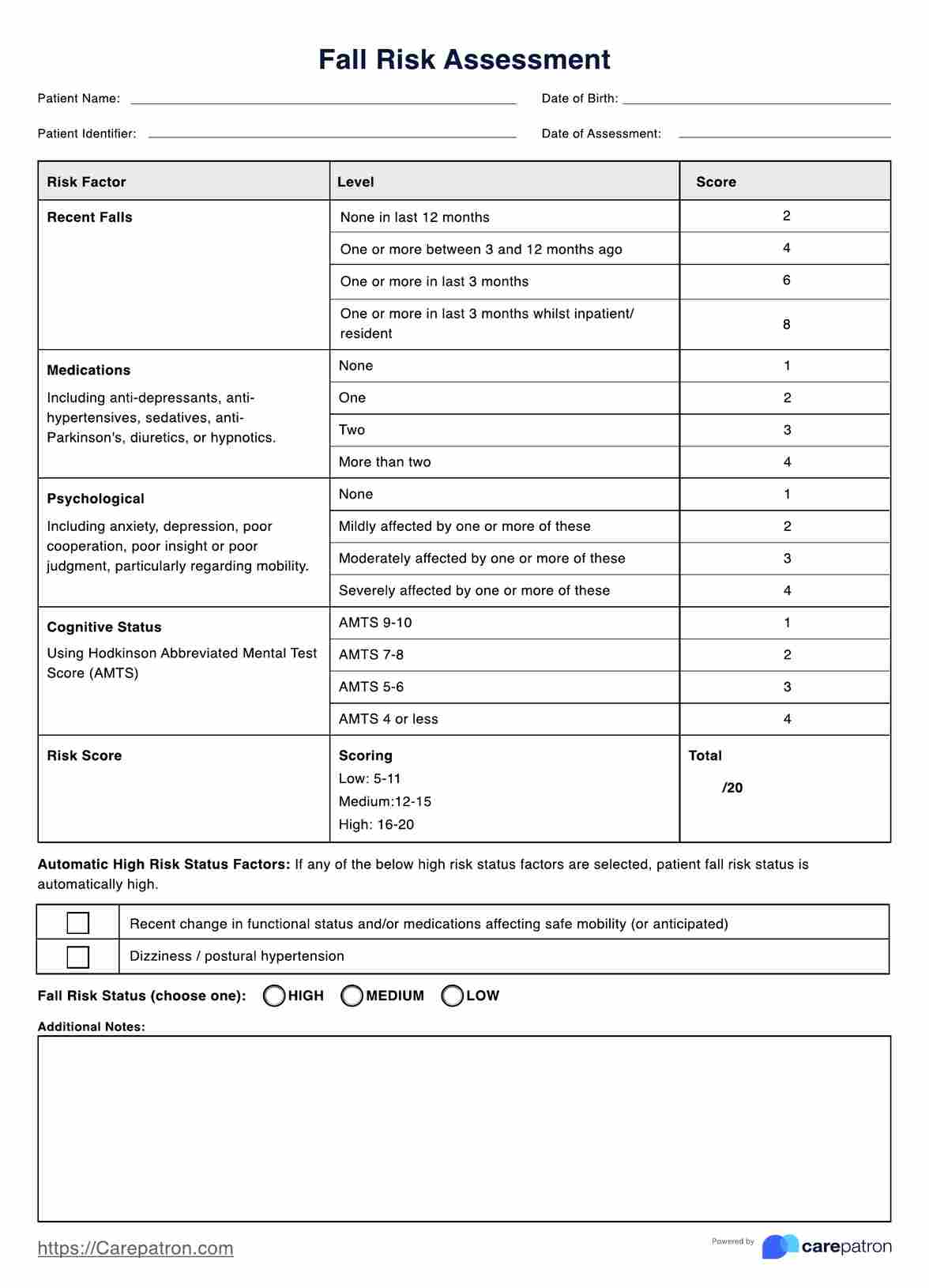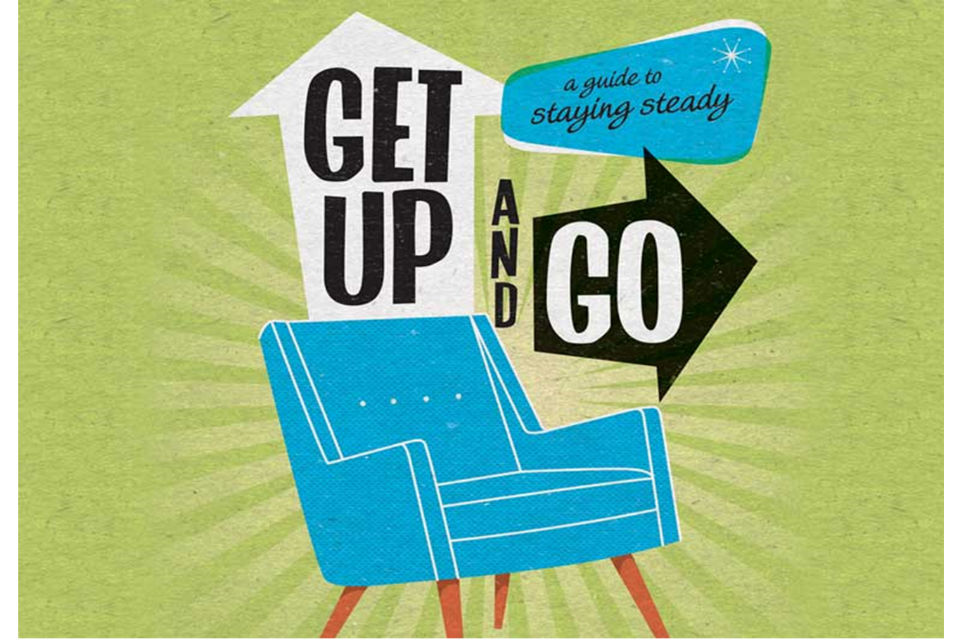The 20-Second Trick For Dementia Fall Risk
The 20-Second Trick For Dementia Fall Risk
Blog Article
Little Known Questions About Dementia Fall Risk.
Table of ContentsDementia Fall Risk Fundamentals ExplainedThe Ultimate Guide To Dementia Fall RiskThe Buzz on Dementia Fall RiskDementia Fall Risk - The FactsHow Dementia Fall Risk can Save You Time, Stress, and Money.
In the area, poor road illumination or unsafe creeks and garbage dumps might also cause mishaps. Loss Danger Assessment Device (FRAT) is a 4-item falls-risk testing device for sub-acute and property care. The FRAT has three areas: fall risk status, danger variable checklist, and activity strategy. A Loss Risk Condition consists of data regarding background of recent falls, medications, emotional and cognitive status of the patient.If the patient scores on a danger element, the equivalent number of factors are counted to the client's loss risk rating in the box to the far. If a client's loss danger rating totals 5 or higher, the individual goes to high threat for falls. If the patient scores only 4 factors or lower, they are still at some risk of falling, and the registered nurse should utilize their best scientific evaluation to handle all fall risk elements as component of an alternative care strategy.
These common methods, as a whole, help establish a risk-free atmosphere that lowers unintended drops and delineates core safety nets for all people. Signs are crucial for individuals in jeopardy for falls. Medical care companies require to acknowledge who has the condition, for they are in charge of carrying out activities to advertise person safety and prevent drops.
The Ultimate Guide To Dementia Fall Risk
Wristbands should include the client's last and initial name, day of birth, and NHS number in the UK. Just red shade must be used to signal unique individual standing.
Products that are also far might call for the person to connect or ambulate unnecessarily and can possibly be a threat or add to falls. Helps avoid the patient from heading out of bed without any help. Nurses react to fallers' phone call lights a lot more swiftly than they do to lights launched by non-fallers.
Visual problems can significantly create drops. Hip pads, when worn appropriately, might decrease a hip crack when autumn takes place. Maintaining the beds closer to the floor reduces the danger of falls and major injury. Positioning the mattress on the flooring considerably minimizes autumn risk in some medical care setups. Low beds are made to lessen the distance a patient falls after relocating out of bed.
Dementia Fall Risk for Dummies
People that are tall and with weak leg muscles who try to rest on the bed from a standing placement are most likely to fall onto the bed because it's as well reduced for them to reduce themselves securely. Also, if a tall person attempts to rise from a reduced bed without assistance, the patient is most likely to drop back down onto the bed or miss the bed and fall onto the floor.
They're made to promote timely rescue, not to avoid drops from bed. Distinct alarm systems can additionally advise the person not to stand a knockout post up alone. The usage of alarm systems can likewise be an alternative to physical restraints. Apart from bed alarms, increased guidance for risky patients also may assist avoid drops.

Clients with an evasion stride boost loss possibilities significantly. To reduce my link loss threat, footwear need to be with a little to no heel, thin soles with slip-resistant walk, and support the ankles. Recommend person to use nonskid socks to avoid the feet from sliding upon standing. Motivate clients to use appropriate, well-fitting shoesnot nonskid socks for ambulation.
Some Known Details About Dementia Fall Risk
Patients, specifically older adults, have reduced aesthetic ability. Lights an unknown environment helps boost visibility if the person must stand up during the night. In a research study, homes with adequate illumination report less drops (Ramulu et al., 2021). Enhancement in illumination at home may reduce loss rates in older adults (Dementia Fall Risk). Making use of stride belts by all healthcare providers can advertise safety and security when assisting patients with transfers from bed to chair.

Caretakers work for assuring a protected, secured, and safe setting. Research studies demonstrated very low-certainty proof that sitters reduce autumn risk in acute treatment hospitals and only moderate-certainty that options like video clip monitoring can lower sitter use without boosting autumn threat, suggesting that sitters helpful hints are not as useful as initially thought (Greely et al., 2020).
How Dementia Fall Risk can Save You Time, Stress, and Money.

Boosted physical fitness decreases the threat for falls and restricts injury that is endured when loss takes place. Land and water-based workout programs may be likewise useful on balance and gait and therefore decrease the danger for falls. Water exercise may contribute a favorable advantage on balance and gait for ladies 65 years and older.
Chair Increase Workout is an easy sit-to-stand workout that helps reinforce the muscle mass in the upper legs and buttocks and enhances flexibility and independence. The goal is to do Chair Increase exercises without utilizing hands as the client ends up being stronger. See sources section for a detailed direction on how to execute Chair Increase workout.
Report this page